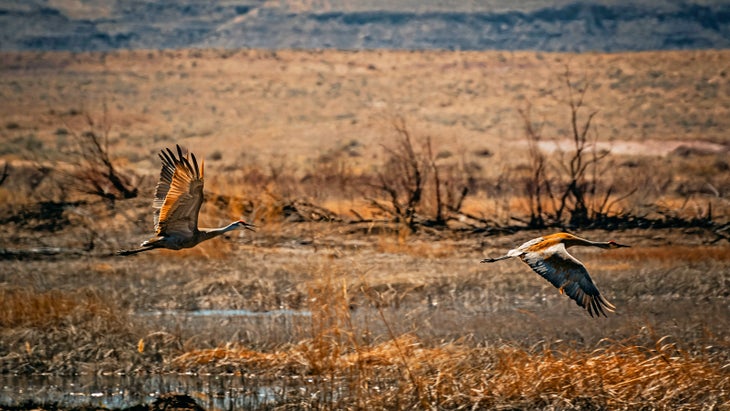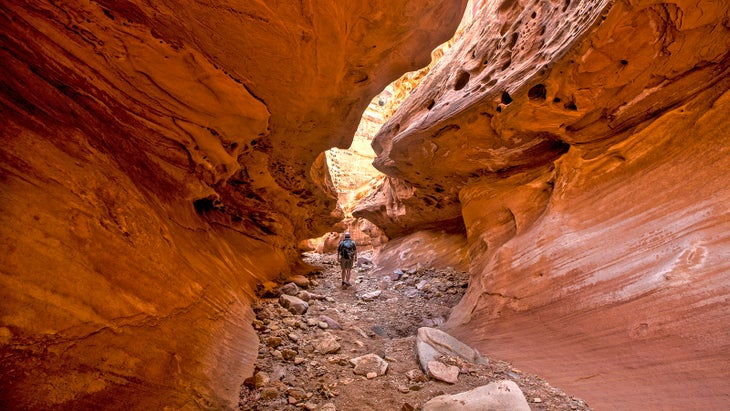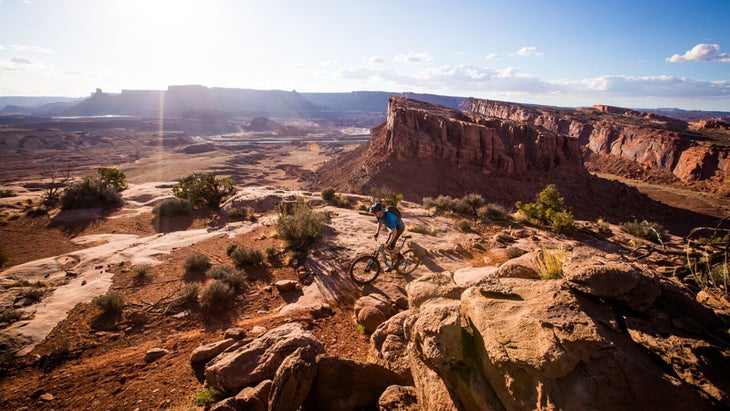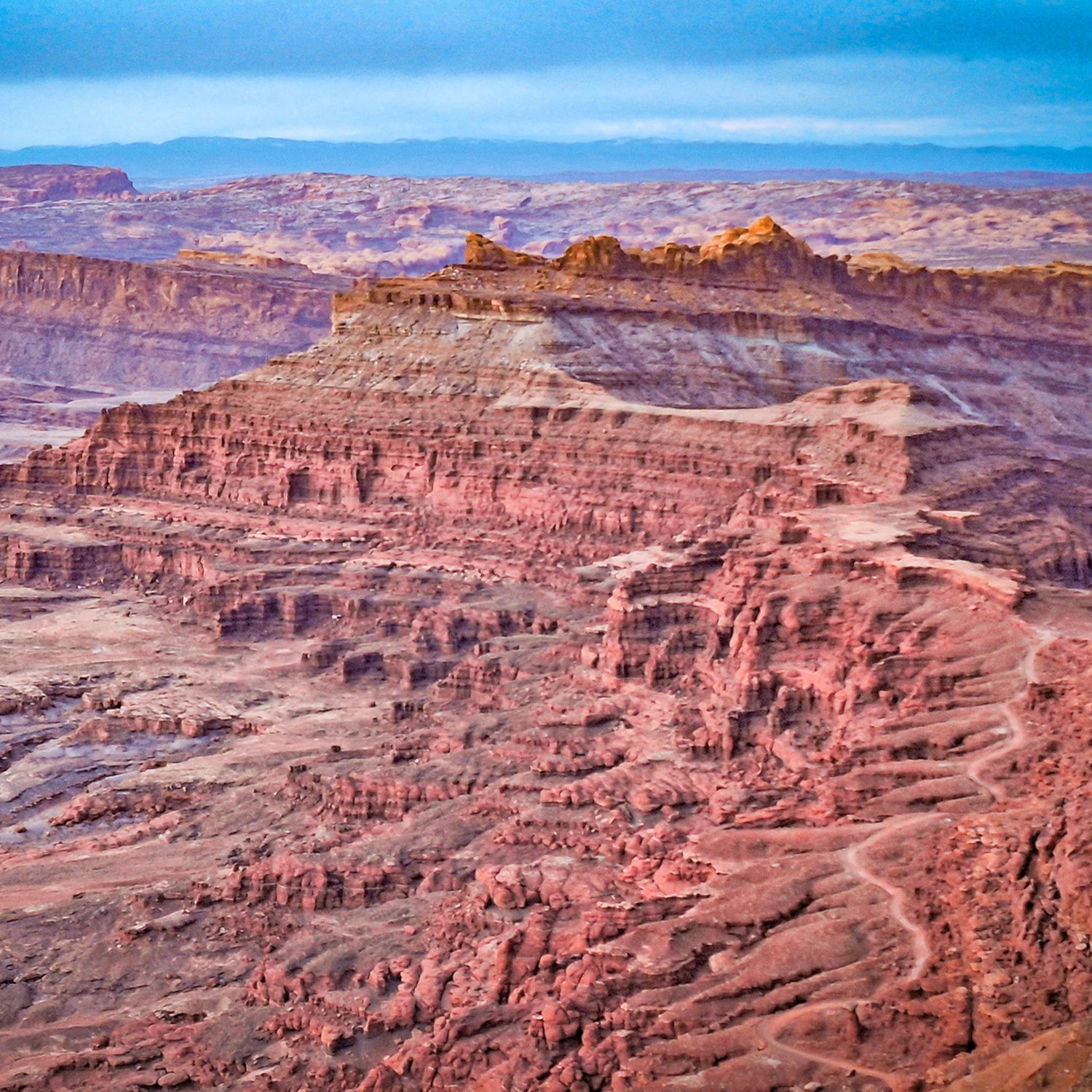Politicians in Utah have a long history of trying to sell off your public land to benefit the oil, gas, and other extractive industries that fund their campaigns. This time they’re trying to do it with That lawsuit argues that all Bureau of Land Management acres within the state’s borders should be transferred to Utah’s control.
If they succeed, the public could lose access to millions of acres that we use to pursue our favorite outdoor activities, wildlife could lose its habitat, and the environment could suffer. Worse, if the Supreme Court accepts the theory that states should have control over federal land, the upshot could be devastating. It could create precedent that might allow politicians in other western states to do the same.
“The state of Utah’s push for control of public lands is a deceptive ploy to privatize and exploit our cherished landscapes,” says Caroline Gleich, who is running to represent Utah in the U.S. Senate. She says the effort is “hiding behind false promises of local management while lining the pockets of special interests at the expense of Utahn’s right to access and enjoy these lands.”
What Does This Mean for People Who Love the Outdoors?
What’s at stake here for outdoor recreationists is access, and a whole lot of it. More than visited Utah’s public lands in 2023 to recreate and take in the majestic scenery. Since the effort aims to transfer all BLM land in the state—18.5 million acres of it—to Utah’s control, it’d be impossible to list every hiking trail, camping spot, or area of natural beauty that might be lost. But let’s look at some highlights.
Over ride the Slickrock Mountain Bike Trail near Moab every year. The 10.5-mile loop rolls along Navajo sandstone, the remains of ancient windblown sand dunes. The land under the trail is thought to contain significant oil and gas reserves and has been the subject of decades-long attempts to open it up to drilling. In 2020, a public pressure campaign forced the BLM to prioritize recreational access, and ban drilling along the trail’s length. If BLM land is transferred to state control, those protections would vanish.
The encompasses over 900 miles of trails in central Utah, the most expansive network of ATV trails in the entire country. It runs across three mountain ranges, reaches elevations of over 11,000 feet, and stretches through fragile deserts and narrow canyons. The system exists on a patchwork of lands administered by both the Fishlake National Forest and BLM, so any sale would fracture continuous access, and destroy the unique ability for visitors to explore such a vast area of uninterrupted riding.
Visiting Canyonlands National Park or Deadhorse Point State Park (the most visited state park in Utah), and want to camp somewhere a little less crowded? Horsethief Campground is located nearby, and the surrounding BLM land is accessible for dispersed camping. That’s . The BLM has to balance the potential economic impact of that mine with the interests of campers and other recreational users, plus its environmental impacts. By law, Utah would only have to consider profitability if it took over management.
That’s because the legal structures governing federal management of public lands are fundamentally different from the mandates governing state management.��Let’s look at the claims the state is making here, then compare them to the facts.

Utah’s Claim: BLM Land Is “Unappropriated” and Doesn’t Benefit the State
“The federal government controls nearly 70% of the land in Utah,” reads the boilerplate copy on , a website the state launched to promote its lawsuit. “While half of this public land has been designated as national parks, national forests, national conservation areas, or the like, the other half is ‘unappropriated’ land, meaning that the United States simply holds the land without any designated purpose.”
Utah Attorney General Sean Reyes that this “prevents the state from making money off of taxes…on those acres.”
The Facts: BLM Land Contributes Billions to Utah’s Economy and Hundreds of Millions to State Coffers
The term “unappropriated” comes from the (and other early acts of Congress), which in 1862 attempted to give away vast swaths of federally-managed land in the west to settlers to encourage economic development. The federal government acquired the area that would later become Utah from the treaty that ended the Mexican-American war in 1848 and in a purchase from Texas.
But not all that land was suitable for the small family farms the Homestead Act sought to establish, so some of it remained unclaimed, except by Indigenous people. The agency responsible for managing that land was at the time called the General Land Office, and along with the U.S. Grazing Service .
Utah is using that “unappropriated” label to imply that BLM land isn’t being actively managed or used. This couldn’t be further from the truth. The Department of the Interior estimates that, in financial year 2021, lands managed by BLM nationwide produced $201 billion in economic output, supporting 783,000 jobs. In Utah alone, .
While oil and gas companies, ranchers, outfitters, hotels, restaurants, and other businesses profit from extraction and recreation on BLM land within Utah’s borders, the state government does, too. Not only in taxing all of that—a study conducted by the University of Utah in 2013 estimated that the state nets from economic activity on BLM and Forest Service land within its borders—but in direct payments from the federal government, too.
And while it’s true that a state government cannot levy property taxes on land managed by the federal government, there’s a program in place to make up for that. In 2021, the BLM paid to Utah in Payments in Lieu of Taxes. represent a portion of the revenues collected by BLM from extraction activities, and Utah uses them to fund roads and schools, and supplement the income and property taxes paid by Utah residents in other state programs. Those payments are guaranteed income for state governments, and come without any cost to the states within which the BLM operates.

Utah’s Claim: It’s Illegal for the Federal Government to Own Land
“Utah has filed a landmark public lands lawsuit asking the U.S. Supreme Court to address whether the federal government can simply hold unappropriated lands within a state indefinitely,” reads Stand For Our Land.
“Nothing in the text of the Constitution authorizes such an inequitable practice,” , who is managing the lawsuit, in a press release upon filing suit.
The Facts: It’s Literally in the Constitution
Article IV, Section 3, Clause 2 reads:
“The Congress shall have Power to dispose of and make all needful Rules and Regulations respecting the Territory or other Property belonging to the United States; and nothing in this Constitution shall be so construed as to Prejudice any Claims of the United States, or of any particular State.”
The Supreme Court has ruled on the legality of federal land ownership several times. Notably, finding that Congress’s power under the Property Clause is, “,” in 1940 and “,” which can be read as “unqualified or absolute,” in 1987.
In 1972, the court ruled on the legality of the federal government’s efforts to protect wildlife on public lands. The decision reads, “the complete power that Congress has over federal lands under this clause necessarily includes the power to regulate and protect wildlife living there.”
During the ratification of the Constitution, Congress had to resolve the often overlapping nature of lands claimed by the states. The royal charters that established the colonies of Massachusetts, Connecticut, New York, Virginia, North Carolina, South Carolina, and Georgia, for instance, granted them incredibly broad, vague claims to massive swaths of land often running north into Canada and all the way west to the Pacific Ocean. In 1780, : the states would cede their western territories to the federal government, “for the use and benefit of the United States.”
As an aside, this is why there’s so little public land on the east coast, and so much out west—blame King George.
When Utah became a state in 1896, the federal government was land rich, and cash poor, so it was common practice to give new western states a portion of federal land that they could use for development. Utah was given 7.5 million acres, while the federal government retained 37.3 million acres. The remaining 9.7 million acres were private property.
Utah agreed to these terms. states, “The said State of Utah shall not be entitled to any further or other grants of land for any purpose than as expressly provided in this Act.”
“Like other Western states, Utah agreed to relinquish public lands within its borders as a condition of becoming a state,” Randi Spivak, public lands policy director for The Center of Biological Diversity . “Rewriting history and spending taxpayer dollars on a hopeless, expensive court battle is the antithesis of good governing.”

Utah’s Claim: The State Would Be a Better Steward
“Utah deserves priority when it comes to managing its land,” . “And Utahns are best positioned to understand and respond to the unique needs of our environment and communities.”
“If Utah were to acquire BLM lands, the Utah department of Land Management would come into existence and manage them under the Utah Public Lands Management Act, prohibiting the privatization of these public lands except in rare situations,” the narrator says in .
The Facts: Utah’s Constitution Would Force a Sale
The state’s own promotional material, which prominently addresses the sale of public lands, is the elephant in the room.
The is a vague text that contains no financial mandates or duties, and no mention of any mechanism (even what might define or determine that “rare situation”) for the dispersal or sale of lands. It is incapable of governing the management, sale, or dispersal of any public lands the state might take over.
For that, we have to turn to , which says of State Trust Lands (those tracts of land provided to Utah by the federal government which remain undeveloped): “The state shall manage the lands and revenues generated from the lands in the most prudent and profitable manner possible.”
Utah’s constitution also mandates that the state legislature . The state cannot legally operate in deficit.
It’s those for-profit, no-deficit mandates in Utah’s constitution which are the rub. In contrast, the BLM is mandated to manage for multiple use and sustained yield. Should a large expense like fighting a massive wildfire, or dealing with widespread flooding, or a deadly cloud of toxic dust occur, the federal government is equipped with the legal and legislative structure necessary to draw funds from other parts of its budget, and deal with the problem.
In contrast, Utah would be legally bound to continue to achieve profits from that land, which may force the sale of portions of it to cover those costs. In the event of a transfer from BLM, Utah would immediately begin losing hundreds of millions of dollars annually, and with mitigation bills already racking up (fixing that toxic dust cloud alone is estimated to cost ) it’s easy to see why people fear Utah’s politicians might turn to their sponsors in the oil and gas industries for help.
Beyond the possibility of a massive sell off of formerly-public land, there’s the topic of local input in decision making on BLM land. Stand for Our Land references the Biden Administration’s recent Public Lands Rule (which adds for the environment and wildlife conservation to BLM’s legal structure for rulemaking)�� and the agency’s as examples of far-off bureaucrats making decisions without local input that end up impacting the state’s economy.
This is an oft-repeated refrain across efforts to steal public land from American citizens, and an argument that is made in bad faith. It may be counterintuitive, but the federal government’s decision making on public lands actually involves more mandated local input from the public and stakeholders that also include state and local governments, plus extractive industries, than state decision making processes would.
That Public Lands Rule was made only after a 90-day public comment period and . The trail closures in Moab were developed , even organizations and individuals who opposed the plan. In contrast, the only thing Utah would have to consider is whether or not its decisions would make money.
What’s Next?
The Attorney General’s office filed the suit on Tuesday, August 20. A judge has yet to review the case.�����ϳԹ��� will update this story as the court proceedings move forward. In the meantime, Utahns who want to protect their public land can call their state representatives and make their voices heard.
“Once public lands are transferred to the state, they are overwhelmingly sold to the highest bidder and closed forever,” says Gleich. “The best way to keep access to public lands is to keep them public. We must be good stewards of our land for future generations.”


